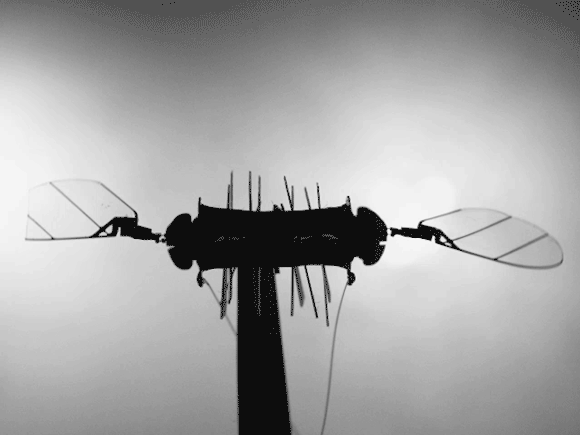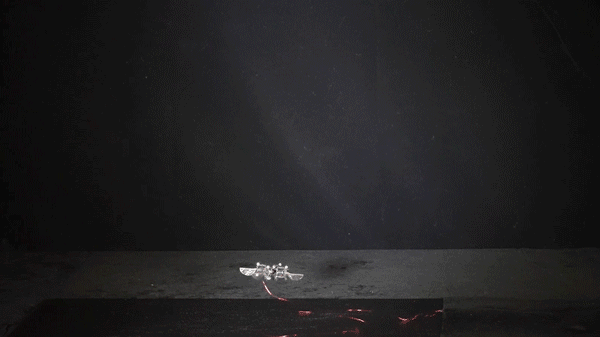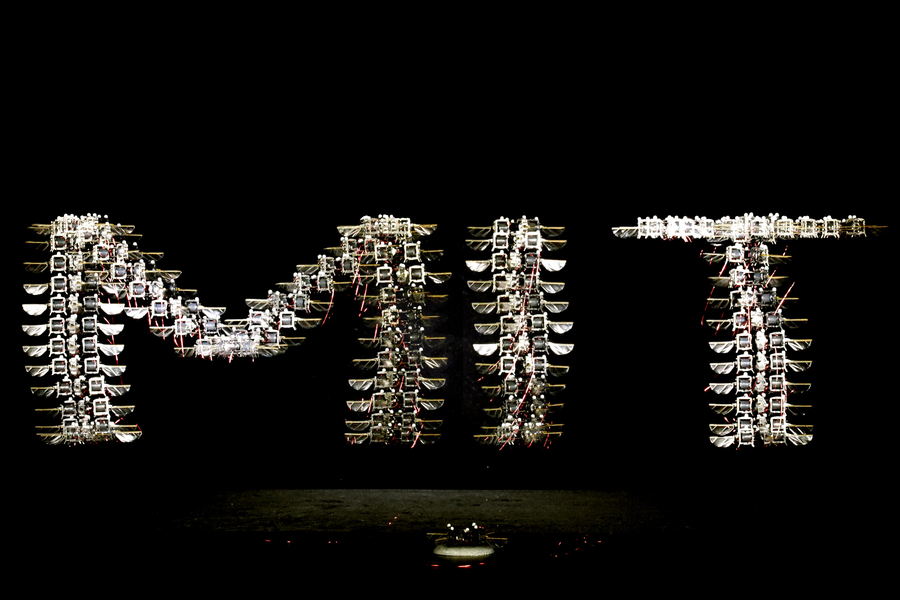A robot that looks like beewhich is under development at the Massachusetts Institute (MIT), is part of a new generation of nature -inspired bots.
The machine, which weighs less than a fastener, can shake his wings up to 400 times a second and has achieved a maximum speed of two meters per second. It can also be reversed and hovering.
“We are just trying to imitate these amazing maneuvers that bees can achieve”, Yi Hsan “Nemo” Hesia, a quarter of a doctoral student working in Robotics, told CNN.
Researchers hope that one day it could help work such as artificial pollination, perhaps even on other planets.
“If you are going to cultivate something on Mars, you probably don’t want to bring a lot of real insects to pollinate,” says Hiao. “There could potentially play the role of our robot”, adds.
Kevin Chen, an Associate Professor at MIT and a key researcher at the Soft and Micro Robotics lab, adds that the team does not want to replace the bees, but to use in scenarios where insects cannot.
They could be used in warehouses with rows of crops stacked high and ultraviolet lighting, he says: “It is very difficult for bees to survive in this environment.”
Around the world, technologists take lessons from nature to create robots that could better perform in complex tasks or difficult environments from traditional technology.
At Yale University, researchers have developed a gecko -inspired robot that can amputate its ends – a skill that could be useful in research and rescue missions in dangerous ruins, according to its creators.
And researchers at Chung-Re University in South Korea recently presented a flexible robot that can bend and crawl like a caterpillar.
“Millions of years of evolution have helped to give (in insects and animals) the best solution, especially for any kind of movement”, He emphasizes Chico, who writes the algorithms that guide the bees-rods how to move.
The bee-rod fluses using soft artificial muscles that are lengthened and contracting to shake the wing, which were developed by Ph.D. Suhan Kim. The wings of the robot, cut with lasers, and its tiny internal mechanisms, similar in size to watch accessories, are also made internally.
The team is also working on a strip -like robot. The machine, smaller than a human thumb, can jump 20 cm in the air and move in soils ranging from grass to ice and leaves. Hesia explains that a jumping robot is more energy efficient than a flying robot.
The small size of the bee and grasshopper robots means that they could be useful for research and rescue missions or for exploring locations such as the interior of a pipeline or a turbine machine.
Hesia says that the next step in applying technology to the real world is to add sensors that can supply robots with information as well as batteries to supply them. Machines are currently relying on a cable to feed them. ‘It is very difficult to place a small source of energy in tiny robots’, Chen adds.
The ability to develop a fully autonomous robot in the field could be 20 to 30 years, however.
But studying the physical abilities of insects will give his team a motivation. ‘They’ve evolved for millions of years’, Cenn notes. “There is a lot we can learn from the movement, behavior and structure of insects.”
Source :Skai
I am Terrance Carlson, author at News Bulletin 247. I mostly cover technology news and I have been working in this field for a long time. I have a lot of experience and I am highly knowledgeable in this area. I am a very reliable source of information and I always make sure to provide accurate news to my readers.













